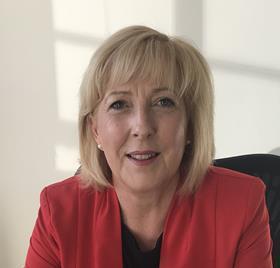By Fiona Reynolds (@Fireynolds), CEO, PRI

Responsible investment should be at the core of the relationship between asset owners and investment managers. More and more clients want it, regulators demand it and academic and industry evidence supports it[1].
Discussions around the integration of ESG issues and selection, appointment and monitoring (SAM) of investment managers have transformed since the PRI was founded in 2006, when they were considered a “nice to-have”. Now, when leading asset owners work with their investment managers, they are starting to introduce activities such as minimum standards for shortlisting, incorporating clauses into contractual documentation and threatening to terminate relationships due to materialising ESG issues.
Asset managers now expect these types of requirements. But there is still a long way to go until responsible investment is systematically integrated into each step of the SAM journey, and asset owners have been calling out for tools to guide them on this.
That is why today we have published three new guides that focus on each step of the SAM process, and are designed specifically for the PRI’s 550+ asset owner signatories.
The selection guide outlines attributes of leading approaches when selecting asset managers. The appointment guide includes 12 clauses that can be used by asset managers when writing and agreeing contractual agreements. And finally, the monitoring guide includes a set of questions or disclosures that can be used by asset owners during the regular monitoring process.
We expect investment managers to provide further transparency in ESG integration such as ESG policies, processes, resources, disclosures, and active ownership practices where relevant
Eri Yamaguchi, New York State Common Retirement Fund
Encouraging, supporting and collaborating with asset owners is fundamental to the PRI’s theory of change, as this group of signatories plays a key role in influencing the entire investment manager industry. Asset owners, along with their advisers, must be empowered to challenge investment managers on practice, to uncover greenwashing and to really trigger changes in practice across ESG integration and engagement. We therefore hope the guides will support large and small asset owners and their advisers to incorporate ESG factors into how they relate to, co-operate with and challenge asset managers.
From greenwashing to real world outcomes. That is the future of the relationship between asset owners and their investment managers
Xander den Uyl, Chair of the PRI’s Asset Owner Advisory Committee
The guides draw on practices from the 2019 Leaders’ Group, as well as feedback from a series of workshops held during the year, to build a picture of leading practice and initiatives in this area. And I’m pleased to note that these leading practices are not just limited to large European asset owners. Our Asia Pacific workshop discussion on SAM reflects that these are now global practices.
We apply a due diligence process explicitly covering ESG aspects, which along with the implementation of ESG benchmarks allows us to have both the right measurement and appropriate incentives for our asset managers in place
Claudia Bolli, Swiss Re
Integrating ESG into contractual relationships between asset owners and investment managers is important, integrating ESG into contracts between investment managers and investee companies even more so
Yvonne Bakkum, FMO
This work programme doesn’t stop here. These tools will be followed by SAM introductory guides – these guides have proved popular as a starting point to discover the PRI’s work. We will also be working on mandate design and are interested to hear from asset owners who have started to design mandates which incorporate ESG factors.
I would like to thank all the signatories who contributed to these guides and have been involved in our broader asset owner programme. I hope they will contribute to the industry’s technical understanding of responsible investment and empower asset owners around the world to raise the bar on it too, creating a more equitable and sustainable future for our planet.
Now it’s over to you. To help us shape the future of our SAM programme, submit your case studies on the topic.
The next phase of the workstream covers mandate design. Signatories interested in sharing best practices in this field, should email us.
This blog is written by PRI staff members and guest contributors. Our goal is to contribute to the broader debate around topical issues and to help showcase some of our research and other work that we undertake in support of our signatories.Please note that although you can expect to find some posts here that broadly accord with the PRI’s official views, the blog authors write in their individual capacity and there is no “house view”. Nor do the views and opinions expressed on this blog constitute financial or other professional advice.If you have any questions, please contact us at [email protected].
References
[1] Client demand has grown strongly, with 68% of the PRI’s asset owner signatory base addressing ESG considerations in their requests for proposals based on 2019 Reporting & Assessment responses








